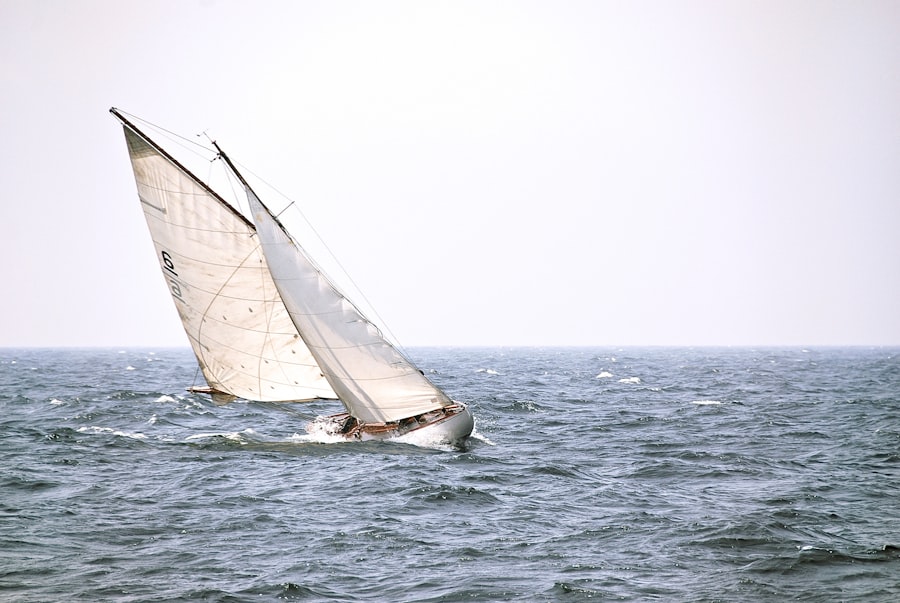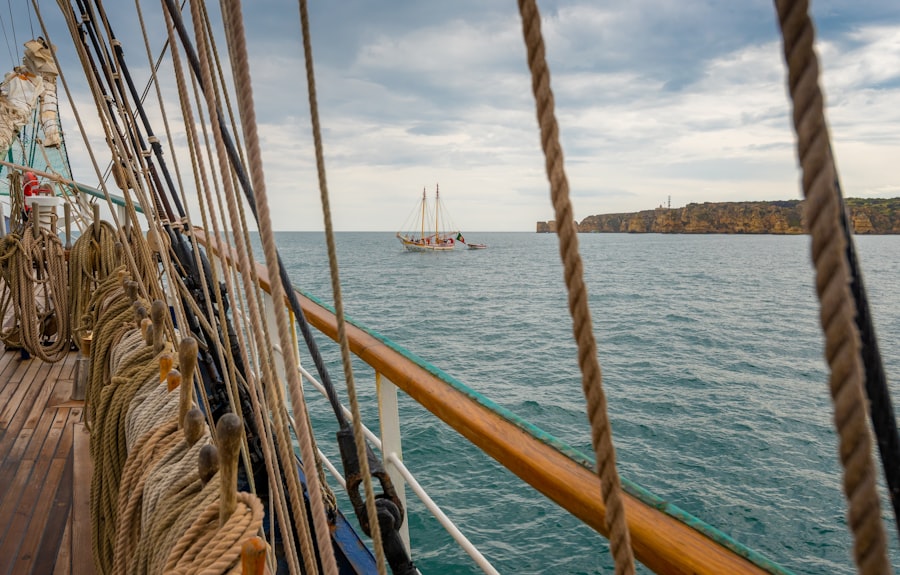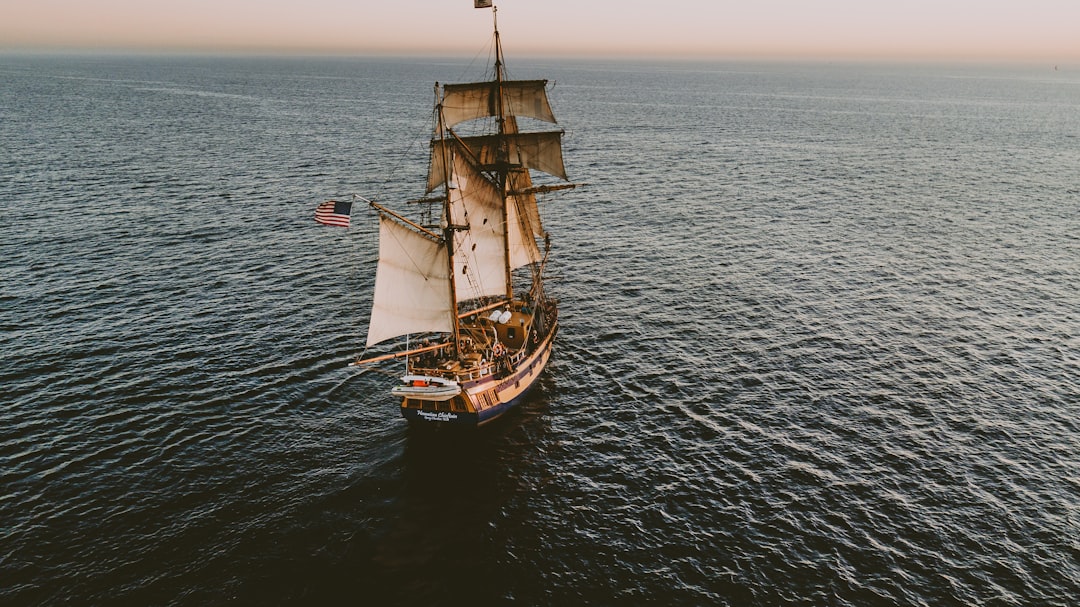The Drake Passage, a body of water located between the southern tip of South America and Antarctica, is renowned for its tumultuous seas and unpredictable weather. This narrow stretch of ocean, measuring approximately 800 kilometers (500 miles) wide, serves as a critical maritime route for vessels traveling to and from the Antarctic region. Named after the English explorer Sir Francis Drake, who navigated these waters in the late 16th century, the passage is often regarded as one of the most challenging maritime routes in the world.
Its significance extends beyond mere geography; it is a vital conduit for scientific research, tourism, and commercial shipping. The unique geographical features of the Drake Passage contribute to its notorious reputation. The convergence of the Atlantic and Pacific Oceans creates a dynamic environment where strong currents and winds collide, resulting in rough seas that can be daunting for even the most experienced sailors.
The passage is also characterized by its deep waters, which can amplify wave heights and create hazardous conditions. Understanding these elements is crucial for anyone considering a journey through this formidable stretch of ocean, as they can significantly influence both the experience and safety of the crossing.
Key Takeaways
- Drake Passage is a narrow body of water between South America’s Cape Horn and the South Shetland Islands of Antarctica, known for its challenging sailing conditions.
- Factors affecting sailing duration across Drake Passage include weather, sea ice, and the route taken by the vessel.
- The average sailing duration for crossing Drake Passage is around 2-3 days, but this can vary depending on the specific conditions and route.
- Weather conditions in Drake Passage can be unpredictable and severe, impacting sailing duration and requiring careful navigation and planning.
- Tips for a smooth sailing experience across Drake Passage include packing appropriate clothing, staying informed about the weather, and being prepared for potential seasickness.
Factors Affecting Sailing Duration
Several factors play a pivotal role in determining the duration of a sailing journey through the Drake Passage. One of the most significant influences is the type of vessel being used. Larger ships, such as cruise liners or research vessels, may have more stability and power to navigate through rough waters, potentially shortening their travel time.
In contrast, smaller yachts or sailboats may take longer due to their limited speed and maneuverability in challenging conditions. The design and capabilities of the vessel can thus greatly impact how quickly one can traverse this notorious passage. Another critical factor is the chosen route and sailing strategy.
Navigators must consider wind patterns, ocean currents, and potential obstacles when plotting their course. The prevailing westerly winds can either aid or hinder progress, depending on their direction relative to the vessel’s intended path. Additionally, sailors must be prepared to adjust their plans based on real-time weather conditions, which can change rapidly in this region.
These variables necessitate careful planning and flexibility, as they can significantly affect the overall duration of the crossing.
Average Sailing Duration

The average sailing duration through the Drake Passage typically ranges from two to four days, depending on various factors such as vessel type, weather conditions, and navigational choices. For larger cruise ships equipped with powerful engines, the journey may be completed in as little as two days under favorable conditions. These vessels are designed to handle rough seas more effectively, allowing them to maintain a steady pace even when faced with challenging weather.
Conversely, smaller sailing vessels may require more time to navigate the passage safely. With an average speed of around five to seven knots, these boats could take up to four days or more to complete the crossing. The slower pace allows for greater maneuverability and safety but also extends the duration of the journey.
Ultimately, travelers should be prepared for variability in their sailing experience, as conditions in the Drake Passage can change unexpectedly.
Weather Conditions and Their Impact
| Weather Condition | Impact |
|---|---|
| Heavy Rain | Flooding, reduced visibility, and increased risk of accidents |
| High Winds | Damage to structures, power outages, and transportation disruptions |
| Extreme Heat | Heatstroke, dehydration, and increased energy demand |
| Severe Thunderstorms | Hail, strong winds, and potential for tornadoes |
| Heavy Snowfall | Travel disruptions, road closures, and increased risk of accidents |
Weather conditions in the Drake Passage are notoriously unpredictable and can have a profound impact on sailing duration and safety. The region is known for its fierce storms, high winds, and rapidly changing weather patterns. Sailors must remain vigilant and adaptable, as conditions can shift from calm to chaotic within a matter of hours.
The presence of low-pressure systems can lead to rough seas and strong gusts, making navigation particularly challenging.
Mariners must be equipped with reliable weather forecasting tools and maintain constant communication with meteorological services to stay informed about impending changes.
Understanding these weather dynamics is essential for planning a successful crossing through the Drake Passage, as they can dictate not only the duration of the journey but also the overall safety of all onboard.
Tips for a Smooth Sailing Experience
To ensure a smooth sailing experience through the Drake Passage, travelers should prioritize thorough preparation and planning. One essential tip is to choose the right time of year for crossing. The austral summer months from November to March generally offer more favorable weather conditions, with calmer seas and milder temperatures.
During this period, travelers are more likely to encounter manageable conditions that enhance their overall experience. Additionally, it is crucial for sailors to pack appropriately for the journey. Layered clothing that can accommodate fluctuating temperatures is essential, as conditions can vary dramatically throughout the crossing.
Moreover, bringing along seasickness remedies and ensuring that all safety equipment is in good working order can help mitigate potential discomfort or hazards during the voyage. By taking these proactive steps, travelers can significantly improve their chances of enjoying a successful crossing through this challenging maritime region.
Navigation Challenges

Navigating through the Drake Passage presents a unique set of challenges that require skill and experience from sailors. One of the primary difficulties lies in managing the strong currents that flow through this area. The confluence of different oceanic currents creates complex water movements that can affect a vessel’s course and speed.
Sailors must be adept at reading charts and understanding how these currents interact with wind patterns to maintain an efficient route. In addition to currents, icebergs pose another significant navigation challenge in the Drake Passage. As vessels approach Antarctica, they may encounter floating ice masses that can obstruct their path or create hazardous conditions.
Mariners must remain vigilant and employ radar systems or visual spotting techniques to detect icebergs well in advance. This requires not only technical skill but also an understanding of local geography and environmental factors that influence iceberg movement.
Safety Measures for Drake Passage Crossing
Safety should always be a top priority when planning a crossing through the Drake Passage. Mariners are encouraged to conduct thorough pre-voyage inspections of their vessels to ensure that all equipment is functioning correctly. This includes checking life jackets, emergency beacons, communication devices, and navigation systems.
Having reliable safety gear on board can make a significant difference in emergency situations. Moreover, it is advisable for sailors to travel in groups or as part of an organized expedition whenever possible. This not only provides additional support but also enhances safety through shared resources and expertise.
Experienced crew members can offer valuable insights into navigating challenging conditions and responding effectively to emergencies. By prioritizing safety measures and fostering a culture of preparedness, sailors can significantly reduce risks associated with crossing the Drake Passage.
Alternative Routes and Their Pros and Cons
While the Drake Passage is often considered the most direct route to Antarctica, there are alternative paths that travelers may consider based on their preferences and circumstances. One such option is taking a longer route around Cape Horn, which offers a more sheltered passage but may extend travel time significantly. This alternative can provide calmer waters but requires careful planning due to potential delays caused by weather or other factors.
Another alternative involves utilizing air travel to reach specific destinations in Antarctica directly. While this option eliminates the challenges associated with sailing through the Drake Passage, it may limit opportunities for wildlife encounters or scenic views that come with maritime travel. Each alternative route presents its own set of advantages and disadvantages; thus, travelers should weigh their options carefully based on their priorities for adventure versus convenience.
Historical Expeditions and Their Duration
The history of exploration through the Drake Passage is rich with tales of adventure and endurance. Early expeditions faced immense challenges as they sought to chart these treacherous waters.
These historical expeditions serve as a testament to human resilience in the face of nature’s challenges. Shackleton’s famous voyage aboard the Endurance exemplifies not only the dangers posed by the Drake Passage but also the determination required to overcome them. Modern travelers can draw inspiration from these stories while preparing for their own journeys through this remarkable yet formidable maritime region.
Wildlife Encounters and Their Influence on Sailing Duration
One of the most captivating aspects of sailing through the Drake Passage is the opportunity for wildlife encounters that can enrich the experience significantly. The waters are teeming with marine life, including seals, whales, and various seabird species that thrive in this unique ecosystem. These encounters can add excitement to any journey but may also influence sailing duration if vessels choose to linger for observation or photography.
For instance, spotting a pod of whales may prompt sailors to slow down or alter their course to get a closer look at these magnificent creatures. While this can enhance the overall experience, it may also extend travel time if not carefully managed within an itinerary. Thus, travelers should strike a balance between enjoying wildlife encounters and adhering to their planned schedule when navigating through this biodiverse region.
Planning Your Drake Passage Crossing
Planning a successful crossing through the Drake Passage requires careful consideration of various factors that influence both safety and enjoyment. Travelers should begin by researching reputable expedition companies or charter services that specialize in Antarctic voyages. These organizations often provide valuable insights into optimal travel times, vessel options, and safety protocols.
Additionally, prospective sailors should familiarize themselves with essential gear requirements and packing lists tailored for this unique environment. Understanding what to expect during the journey—such as potential weather challenges or wildlife encounters—can help travelers mentally prepare for their adventure ahead. By taking these steps and remaining flexible in their plans, individuals can set themselves up for an unforgettable experience navigating one of the world’s most iconic maritime passages.
Sailing the Drake Passage is a formidable journey that many adventurers and sailors undertake, often wondering about the time it takes to navigate this challenging stretch of water. The duration can vary significantly depending on weather conditions, the type of vessel, and the experience of the crew. For those interested in learning more about the intricacies of such voyages, a related article on the topic can be found on MyGeoQuest. This resource provides insights into the factors affecting travel time across the Drake Passage and offers tips for those planning to embark on this maritime adventure. For more detailed information, you can visit the article by clicking on this link.
WATCH NOW! Drake Passage: Earth’s Deadliest Waters Revealed
FAQs
What is the Drake Passage?
The Drake Passage is the body of water between the southern tip of South America and the South Shetland Islands of Antarctica. It is known for its rough seas and challenging sailing conditions.
How long does it take to sail the Drake Passage?
The time it takes to sail the Drake Passage can vary depending on weather conditions and the specific route taken. On average, it takes about 2-3 days to cross the Drake Passage.
What factors can affect the sailing time across the Drake Passage?
Factors such as weather, sea conditions, and the size and speed of the vessel can all affect the sailing time across the Drake Passage. Stormy weather and rough seas can prolong the journey, while favorable conditions can expedite the crossing.
What is the best time of year to sail the Drake Passage?
The best time to sail the Drake Passage is during the austral summer, which runs from November to March. During this time, the weather is relatively milder and there is more daylight, making for a more comfortable and safer sailing experience.
Are there any challenges associated with sailing the Drake Passage?
Yes, sailing the Drake Passage presents several challenges, including strong winds, rough seas, and potential for storms. The passage is also known for its unpredictable weather, which can make for a challenging and sometimes dangerous journey.
